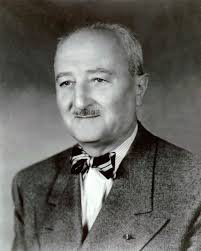William F. Friedman
Country:
USA
Company:
Military
Thus, by the end of 1940, SIS had constructed an exact analog of the PURPLE machine without ever having seen one. With the duplicate machines and an under- standing of PURPLE, SIS could decrypt increasing amounts of Japanese traffic. One such intercept was the message to the Japanese Embassy in Washington, D.C., orde- ring an end to negotiations with the US. The message gave aclear indication ofim- pending war, and was to have been delivered to the US State Department only hours
prior to the attack on Pearl Harbor. Following World War II, Friedman remained in government signalsintelligence. In 1949 he became head of the cryptographic division of the newly formed Armed Forces Security Agency (AFSA) and in 1952 became chief cryptologist for the National Security Agency (NSA) when it was formed to take over from AFSA. Friedman produced a classic series of textbooks, "Military Cryptanalysis", which was used to train NSA students. During his early years at NSA, heencouraged it to develop what were probably the first super-computers, although he was never convinced a machine could have the "insight" of a human mind.
Friedman has been inducted into the Military Intelligence Hall of Fame and there is a building named after William and Elizebeth at the NSA complex at Fort George G. Meade in Maryland. He was also presented the Medal for Merit by President Harry Truman, and the National Security Medal by Dwight Eisenhower.
